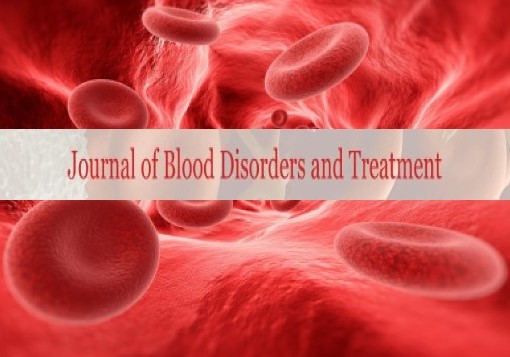Iron Deficiency Anemia: Curable Disease
Received: 08-Aug-2020 Accepted Date: Aug 20, 2020; Published: 31-Aug-2020
Citation: Wang Y. Iron Deficiency Anemia: Curable Disease. J Blood Disord Treat. 2020; 3(3):4.
This open-access article is distributed under the terms of the Creative Commons Attribution Non-Commercial License (CC BY-NC) (http://creativecommons.org/licenses/by-nc/4.0/), which permits reuse, distribution and reproduction of the article, provided that the original work is properly cited and the reuse is restricted to noncommercial purposes. For commercial reuse, contact reprints@pulsus.com
Iron Deficiency Anemia
Iron lack weakness emerges when the parity of iron admission, iron stores, and the body's loss of iron are inadequate to completely bolster creation of erythrocytes. Iron inadequacy paleness infrequently causes passing, yet the effect on human wellbeing is noteworthy. In the created world, this sickness is handily recognized and treated, yet much of the time disregarded by doctors. Conversely, it is a medical issue that influences significant parts of the populace in immature nations. By and large, the anticipation and effective treatment for iron lack paleness remains woefully deficient around the world, particularly among oppressed ladies and youngsters. Here, clinical and lab highlights of the ailment are examined, and afterward center is set around pertinent financial, ecological, irresistible, and hereditary variables that join among worldwide populaces.
Four general classes of proteins contain iron: (1) mononuclear iron proteins (e.g., superoxide dismutase), (2) diiron-carboxylate proteins (e.g., ribonucleotide reductase, ferritin), (3) iron-sulfur proteins (e.g., aconitase), and (4) heme proteins (e.g., hemoglobin). Among these four classifications, the initial three protein bunches are distinguished at lower levels, yet they are practically significant. Hemoglobin is the most bountiful iron-containing protein in people. More than one-portion of all out body iron is contained inside hemoglobin. In view of the area of hemoglobin in erythrocytes, sickliness is a trademark attribute of iron lack.
In spite of iron's plentifulness on earth, iron inadequacy is amazingly normal in people, and is the most common reason for frailty around the world. To all the more completely comprehend iron lack pallor, thought must be coordinated toward ideas of iron flexibly and interest for the creation of erythrocytes. Erythropoiesis-related requests for iron are made by three factors: tissue oxygenation, erythrocyte turnover, and erythrocyte misfortune from discharge. Tissue oxygenation prerequisites and erythrocyte creation for the most part stay stable during adulthood without discharge, ailment, or adjusted physical action. In that capacity, iron homeostasis (Fig.
1) additionally stays stable. Roughly 20 mL of senescent erythrocytes are cleared day by day, and the 20 mg of iron in those cells is reused for the creation of new erythrocytes. Inferable from a shorter half-existence of flowing erythrocytes in iron lack sickliness, iron is recouped sooner in those patients, yet the measure of iron in each microcytic erythrocyte is diminished (Macdougall et al. 1970). In case of drain, extra iron must be consumed from the eating routine to satisfy the consistent state needs of the host.
Erythrocytes and their forerunners require a lot of iron for the creation of heme (Fig. 2) and hemoglobin. Iron is integral to hemoglobin structure and capacity (Perutz 1982). The most quick wellspring of iron for erythroblasts is mono-or diferric transferrin, found in high fixations in the plasma. Iron insufficiency sickliness is ordinarily connected with low iron immersion of accessible transferrin. Iron is stacked onto diferric transferrin from three sources: the gut (diet), macrophages (reused iron), and the liver (put away ferritin iron). When all is said in done, iron stores are diminished or lost before the host creates paleness. In this manner, dietary and erythrocyte- reused iron must satisfy the needs for erythrocyte creation. In the event that iron misfortunes proceed, the recently created erythrocytes will have diminished hemoglobin, causing the measure of iron gave by a similar number of senescent erythrocytes to be decreased. In contrast to thalassemia quality, expanded quantities of erythrocytes are not created in the iron- insufficient state to make up for the decrease in intracellular hemoglobin content. Consequently, reticulocytosis is normally not present. Without significant drain, iron insufficiency frailty by and large grows gradually throughout months or years. Goal of iron inadequacy paleness might be similarly moderate contingent upon the accessibility of iron in the eating regimen just as the ampleness of gastrointestinal capacity.





